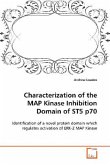S-Ribosylhomocysteinase (LuxS) catalyzes the cleavage
of the
thioether bond in S-ribosylhomocysteine to produce L-
homocysteine and 4,5-dihydroxy-2,3-pentanedione,
the precursor of type II bacterial quorum sensing
autoinducer.
This work carried out extensive mechanistic studies
of the LuxS
reaction. The native metal cofactor of LuxS was
identified as ferrous
ion, instead of previously reported zinc ion, with a
potential catalytic
role. Substantial evidence was provided for the
internal redox
reaction, which comprised two consecutive carbonyl
migration steps
followed by -elimination.
Three LuxS activity assays were developed and greatly
facilitated the
mechanistic investigations of LuxS. Two classes of
LuxS inhibitors
were designed based on metal chelation and catalytic
mechanism,
respectively. They encouraged future development of
LuxS inhibitors
as novel antibacterial agents and helped probe the
catalytic
mechanism of LuxS.
of the
thioether bond in S-ribosylhomocysteine to produce L-
homocysteine and 4,5-dihydroxy-2,3-pentanedione,
the precursor of type II bacterial quorum sensing
autoinducer.
This work carried out extensive mechanistic studies
of the LuxS
reaction. The native metal cofactor of LuxS was
identified as ferrous
ion, instead of previously reported zinc ion, with a
potential catalytic
role. Substantial evidence was provided for the
internal redox
reaction, which comprised two consecutive carbonyl
migration steps
followed by -elimination.
Three LuxS activity assays were developed and greatly
facilitated the
mechanistic investigations of LuxS. Two classes of
LuxS inhibitors
were designed based on metal chelation and catalytic
mechanism,
respectively. They encouraged future development of
LuxS inhibitors
as novel antibacterial agents and helped probe the
catalytic
mechanism of LuxS.








